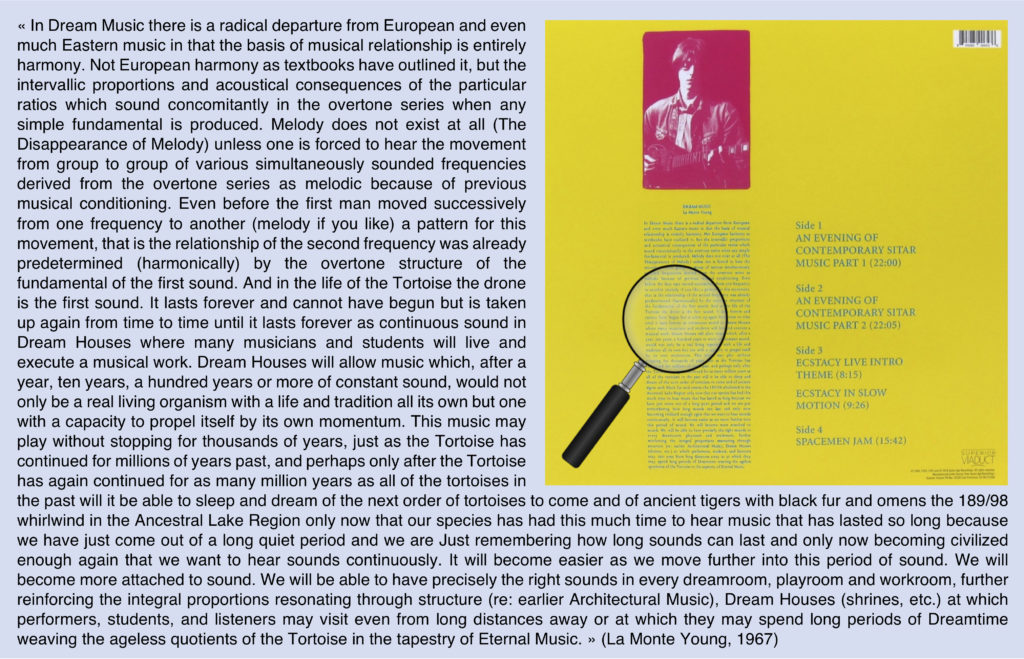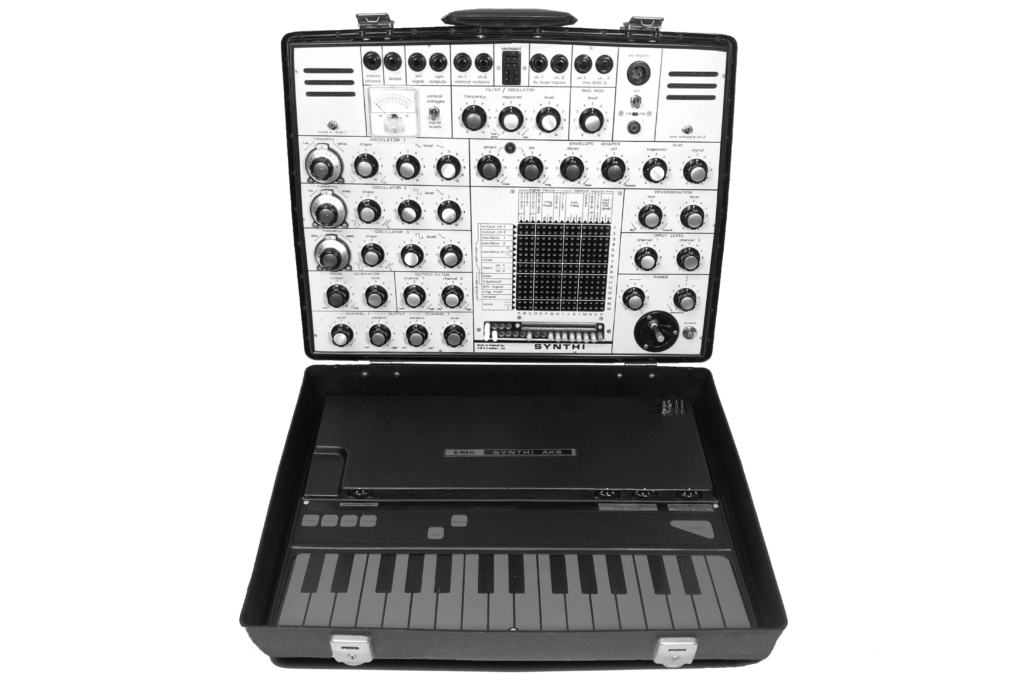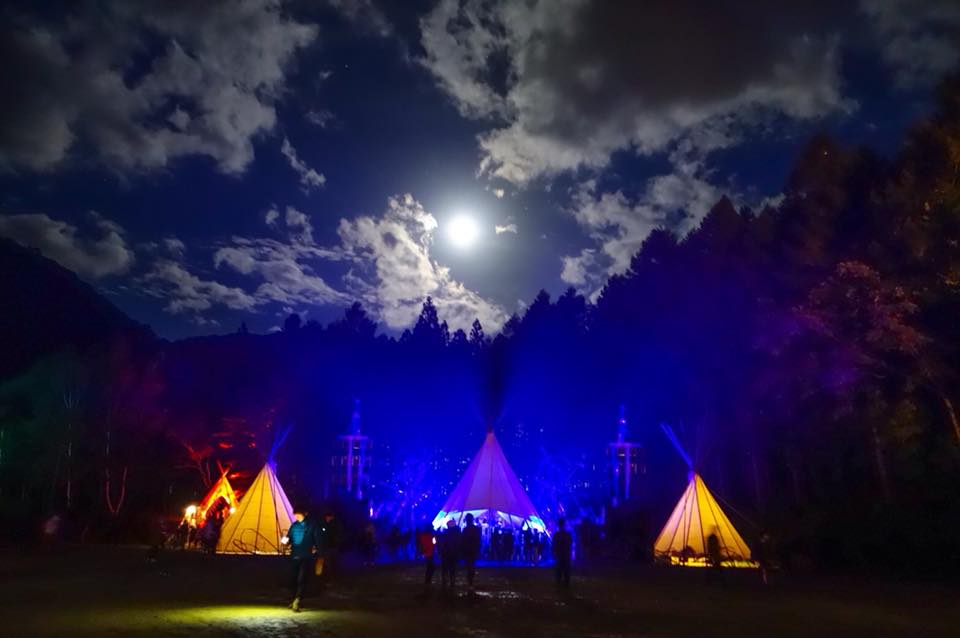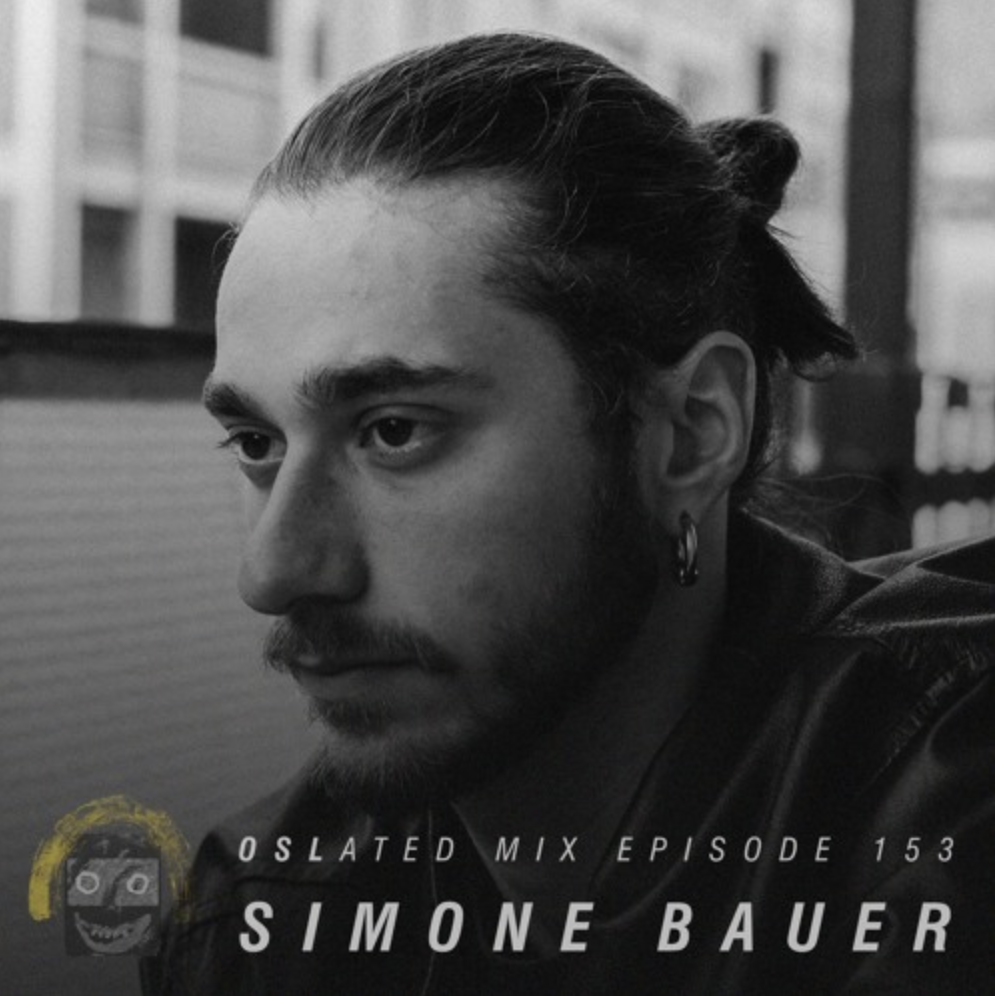Spacemen 3 – Ecstasy In Slow Motion [Fierce Recordings, 1988]
“Ecstasy In Slow Motion” has been a very important track in the psychedelic culture. We use this specific example as a pretext to plunge into the youth movement and show its impact on hypnotic techno.
Contents
1. About Spacemen 3
2. About the track
3. About its impact on hypnotic techno
4. References
SEX, DRUGS AND (SPACE) ROCK
“This is England” was shouting The Clash in 1985 to illustrate the urban alienation of the eighties with, on one side of the ring, the repressive discipline of Thatcherism and on the other side, the individual freedom of the punk culture. The meeting between both smelt sulphur, as highlighted by David Bowie: “Religion is for people who fear hell, spirituality is for people who have been there.”
As a common equation, the more the government was restricting freedom, the more subversive the youth was becoming. The management of the nightlife is an emblematic example: the clubs were obliged to close at 2 AM, the youth created secret afterparties AKA “the raves”, Thatcher forbade them, and the youth exported the concept to other countries. It was also in those years that drug addiction stopped being seen as a medical issue, becoming a political & penal matter with its impact on the black market.
In this context, Spacemen 3 followed the steps of a young alternative rock band at the dawn of the “Trainspotting generation”: daily wasted friends practising at a musician’s parental home, partying at local bars & producing demo tapes before being noticed by the industry. Hash, weed, acid, mushrooms, heroin, their fairy book was growing its list of tales: “I was using intravenous drugs before I lost my virginity, which is a very strange set of priorities for a teenager to have” assumed Peter Kember 5, one of the founders.
It didn’t stop the artists from experiencing two decades of success thanks to their iconic sound signature, mixing mind-bending guitar music with British pop-rock vocals. Such a success was particularly unexpected because the band was constantly rejecting the industry codes. It was for instance conceptualising live shows where the artists don’t show off but rather play seated, to let the music speak by itself.

The magic worked for a while but as always in Wonderland, the pleasure is ephemeral: the group collapsed in 1991 after a first tension with the emblematic hit “Hypnotized“.
THE DIGITAL ERA
On a technical level, great innovations came in the eighties from rock bands like Spacemen 3, who started to put their hands on synths & computers. “Ecstasy In Slow Motion” is one of those tracks which marked the transition between the electroacoustic madness of the previous decades and the modern electronic ambient.
The piece is a 1988 recorded solo studio performance from Kember, added to the band’s live album Dreamweapon from 1990. On the back cover lies a text from La Monte Young, considered as the father of drone music by Brian Eno…

La Monte Young defends a certain minimalism at the base of the drone music, which is set to be a profound inspiration for Kember:
Radiators, fridges, lawnmowers and jet planes were always a big influence, but the drone goes beyond. I was always really taken with certain songs and when I figured out that they all had chords with one note in common, I realized it was the way forward. The drone is like the cohesive root that binds all the separate elements into a world. Those worlds are what interest me. (Louder Than War 6, 2016)
If Led Zeppelin was shining with its memorable virtuosic guitar solos, Spacemen 3 was rather looking for that one simple yet powerful note, that emerged from the interweaving of chords, inspired by the past ambient artists as much as by the vibrant sounds of the daily life: a droning washing machine, the roaring engines of the WW2 bombers on TV, the cars swishing in the rain. For Kember, having “an altered consciousness” was gainful to sense the music out of these common elements and to translate them with instruments. “Ecstasy In Slow Motion” is a perfect result of such a transformation, bringing into a hypnotic soundwave the sensations that allow the listeners to reach a trance state.

A FESTIVAL AT THE SOURCE OF THE MODERN HYPNOTIC TECHNO
More than two decades after the recording of “Ecstasy In Slow Motion”, a DJ took the risk to play the track in full in front of the audience of a whole festival. The result, added to the overall experience, had a great impact on his approach of music. This is another tale worth telling, taking place in Japan.
“Once upon a time” in the land of the rising sun, Russel Moench, an American expatriate, came across some psychedelic & psytrance outdoor venues in the country. He’s been instantly fascinated by the beautiful settings, by how the Japanese audience respects nature, how kind the music enthusiasts are to each other and how much they enjoy such events, often very simply staged. Without further hesitation, Moench and his crew from Mindgames launched “Labyrinth” in 2001, to add a techno tree to Shishi Gami’s forest. If you wonder where the hypnotic techno values come from, check out the three innovative fundaments brought by the festival:
① The connection to nature is everything.
Moench has always considered electronic music as a modern tribal sound which, according to him, requires a tribal context that can’t be provided by an indoor club. When people are dropped into a forestial landscape, facing the elements of nature together, the tribe spirit gets stronger & more authentic. In Moench’s own words:
Outdoor; the limits are removed, it’s a very unpredictable environment, you can get mist on the dance floor in the morning, you could get rain, it could be freezing, you could do a party where it’s cooking outside, you can’t control that, which makes the artistic side of things far more interesting. The DJs must adapt and when they do so, they create something special that can never be repeated. It almost becomes like a soundtrack to nature, a soundtrack to the cycles of the day, and it binds people together. (Cluberria TV 12, 2010)
② The music must serve the connection.
To book his DJs, Moench listens to many mixes & releases and tries to visualize the sounds that match the most with the environment at precise moments of the day. Unlike in other festivals which are basically just alternating shows, the Labyrinth’s conductor conceives a whole symphony to nature. Add the world-class standard Funktion-One sound system, with its high level of sharpness & purity, and the ingredients are reunited to provide a very immersive musical experience.
③ A conceptualized approach is also impactful.
The festival is…
- mysterious, with a line-up that is kept secret until the entrance;
- minimalist, having one stage only;
- humble, by setting the music in front instead of the DJ, who is more or less hidden inside a tepee;
- connected to nature, also with its open ground that invites great hiking;
- mystical, with its tepees & its stands, selling bewitched items highlighted under the mesmerising moon;
- ritualised, with its recurrent concept, its regular visitors & its portion of cutting-edge artists that come back regularly;
- atmospheric, depending on the air humidity;
- psychedelic, from the colourful light show, the music and the silhouettes in trance on the dance floor…

Such qualifiers will shape the modern hypnotic techno, with the help of some torchbearers…
Son of the psychedelic culture, the main “torchbearer” is the artist who dared to play the whole nine minutes of “Ecstasy In Slow Motion” in one of his DJ sets there, as mentioned earlier.
The experience left him with a special imprint:
[In that track,] there was no groove at all, just a phaser effect that sounds like a UFO. The 3000 people on the dancefloor were waiting for this feeling to come back again. Ten minutes of spiral… I told myself: “I got them!” (Trax Mag 18, 2017)
This is one of the awarenesses, among many lived in Labyrinth, that led him to produce tracks with more emphasis on spirals, organic & drone layers. A monumental four-hour closing set in the 2008 edition put his name on people’s lips… Donato Dozzy… What came after is another (hi)story.
REFERENCES
- Chronicle on the 80s in England by Jason Cowley for The Guardian, 2009 (online article here).
- Essay on the British drug policies by Gerry V. Stimson for the British Journal of Addiction, 1987 (pdf here).
- Spacemen 3’s discography (reference here).
- Interview of Peter Kember by Andrew Stevens for 3 AM Magazine, 2002 (online article here).
- Review of Spacemen 3’s biography by Philip Matthews for The Spinoff, 2017 (online article here).
- Interview of Peter Kember by S. McRae for Louder Than War, 2012 (online article here).
- Interview of Spacemen 3 by Julian Marszalek for The Quietus, 2019 (online article here).
- Review of La Monte Young’s lecture by Headphone Commute, 2015 (online article here).
- Gear listing of Spacemen 3 on equiboard.com (reference here).
- Interview of Peter Kember by Tom Ferguson for Keith McMillen Instruments, 2015 (online article here).
- Interview of Peter Zinovieff & Peter Kember by Tom Ferguson for Keith McMillen Instruments, 2015 (online article here).
- Interview in 3 parts of Russ Moench & DJ So by Sisi / Sho for Clubberia TV, 2010 (video pt. 1 here, pt. 2 here, pt. 3 here).
- Interview of Russ Moench by Jordan Rothlein for Resident Advisor, 2014 (podcast here).
- Interview of Russ Moench for Metropolis, 2009 (online article here).
- Interview of Tony Andrews from Funktion-One by Jordan Rothlein for Resident Advisor, 2014 (online article here).
- Tony Andrew winning the 2017 Pro Sound Awards Lifetime Achievement (video here).
- Review of Labyrinth by Travel à la Tendelle, 2017 (online article here).
- Interview of Donato Dozzy & Peter Van Hoesen for Trax Mag, 2017 (online article here).
- Donato Dozzy’s discography (reference here).
- Profile of Donato Dozzy on thebunkerny.com (profile here).
- Interview of Donato Dozzy for Music Box, 2009 (archive here).
WRITING BY: CEDRIC FINKBEINER | 26 JULY 2020


